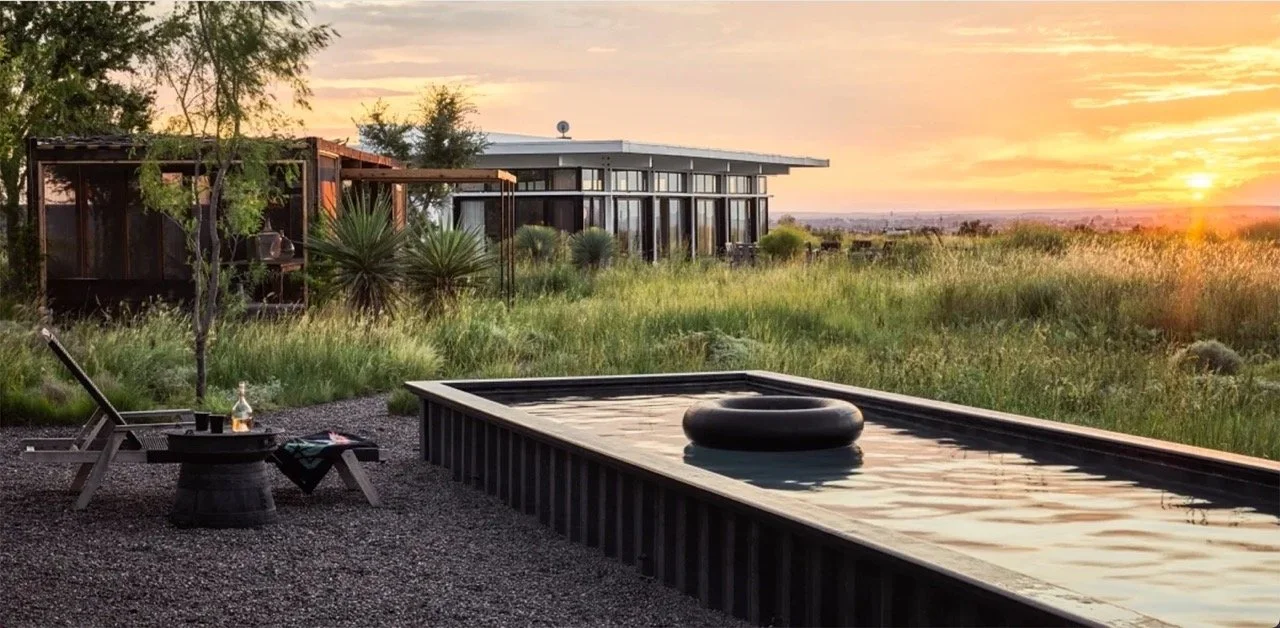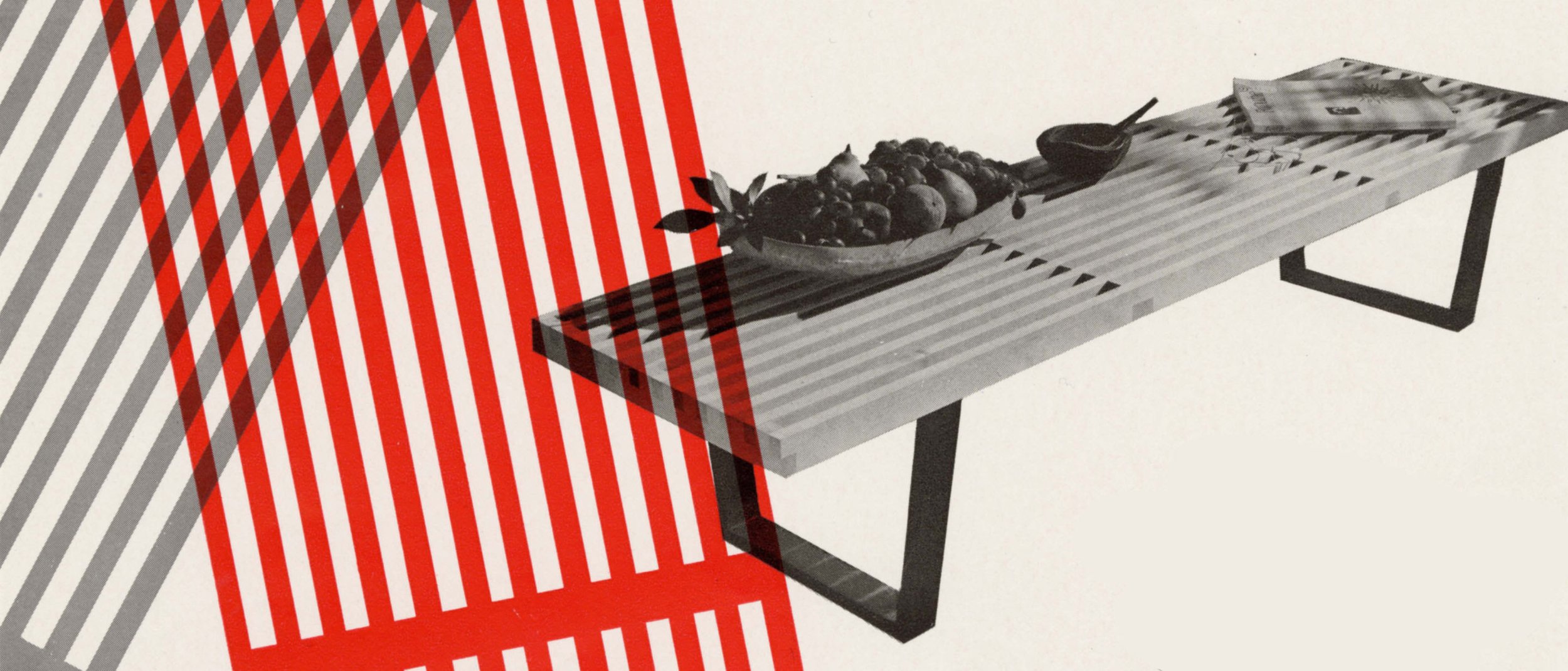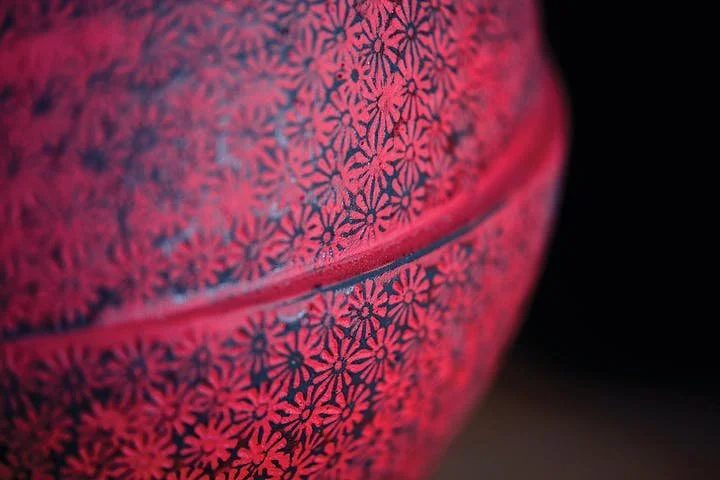Marble is synonymous with grand, storied luxury. One can scarcely tour a museum or a palace without encountering staggering quantities of the stuff: Think of the gleaming ivory and white stone that built the Taj Mahal in Agra, India, or the intricately patterned black and white tiles of the Marble Courtyard paving the way to the Château de Versailles. But recently, designers and architects have been embracing a dazzling range of colorful marbles in their creations—each slab as unique as the geological phenomenon that created it.
Read MoreIt can’t be a coincidence: rising interest rates, worries about inflation and the price of gas, and the triumphant return of the disco ball and the blob sofa all in the same year? Could it be that midcentury-modern style has decided to take a much-needed rest? Avant-garde Italian furniture from the 1970s, smoked glass, conversation pits, earthy colors, and wall-to-wall carpeting all appear to be back with gusto.
Read MoreFew flowers have as strong a grip on the popular imagination as the orchid. An obsession with orchid collecting has even inspired two popular books: Susan Orlean’s The Orchid Thief and Carol Goodman’s The Ghost Orchid. Though delicate in appearance, orchids thrive in environments all over the world.
Read MoreSwimming pools seem like a great idea when a summer heat wave hits, but with the excavation and expense involved in the construction of a traditional in-ground pool, they don’t provide a last-minute solution. That’s why a once-maligned marvel of early-20th-century design—the aboveground pool—is finally enjoying its moment.
Read MoreHamlet VIII, the lobby cat of the Algonquin Hotel in New York City, is arguably the longest-standing resident of the legendary auberge. So when a recent renovation of the property came to pass, Stonehill Taylor applied concepts of cat-friendly design to ensure that he and the inn’s more temporary guests could live in harmony.
Read MoreIt’s a luxurious product, soft to the touch, cozy, yet boldly glamorous. A fashion statement. Are you thinking of wall-to-wall carpet? The furry floor covering might bring to mind a 1970s adult film set more than of-the-moment glamour, but like it or not, all signs point to a resurgence for this misunderstood interior design icon. From chic nightspots to fashion-forward apartments, wall-to-wall carpet is suddenly taking a star turn.
Read MoreNot to be confused with a tagine or a terrine — though they’re also lidded vessels — tureens have been among the brightest stars of a luxuriously appointed table since the 17th century. Their unusual combination of practicality and artistic flourish make them desirable to collectors and home chefs alike.
Read MoreThe man who would eventually be described by Carl Linnaeus as the "greatest natural botanist in the world” began his lifelong study of plants for a surprising reason: John Bartram had dreamed of becoming a doctor, but he was born in Pennsylvania in 1699, where the first medical school (the College of Philadelphia) wouldn’t be established until 1765. With a passion for science and acres of unspoiled wilderness around him, he followed his curiosity and became an expert on North American plants, transforming the culture of gardening on both sides of the Atlantic in the process.
Read MorePicture a shimmering fabric with a subtle wave pattern, and perhaps you’ll imagine an 18th-century portrait painting of a stylish aristocrat wearing a voluminous silk dress. Or the grand wall coverings of a gilded royal bedchamber. You might even picture a deep purple Jessica McClintock prom dress from the 1980s. In all three cases, you’re likely envisioning moiré fabrics, a rippling silk textile that has come to connote very specific periods in history. As it happens, we’re living through one right now.
Read MoreBy the mid-1940s, people in and around the New York offices of Fortune magazine had just about had it with Colonial Revival. In 1946, the writer Eric Hodgins published the wry short story "Mr. Blandings Builds His Castle” in its pages, spinning a tale of well-heeled Manhattanites who move to rural Connecticut with their two daughters hoping to cultivate a life of bucolic tranquility. Instead, they find nothing but headaches, structural problems, and lawsuits. (In the 1948 movie that was eventually made from the novel-length version of Hodgins’s story, the father is played to exasperated perfection by Cary Grant.)
Read MoreNearly two years of intermittent lockdowns have turned us all into homebodies. But as we tentatively emerge from our cocoons, we might wonder what the future has in store for design. The disruption of our routines due to the pandemic has fundamentally transformed how we work and live at home, and the design trends and innovations of the year ahead will all reflect these shifts—perhaps permanently. The home may be more of a refuge than ever, but the more time we’ve spent staring at the walls, the more many of us have become visually restless and eager to make changes to our interiors. Thanks to Zoom, we’ve invited countless colleagues, friends, and family for a virtual peek into our personal spaces, but many of us are only tentatively stepping back into real life entertaining. We know what “before” looked like at home—how about “after”? We tapped the experts to find out.
Read MoreShannon Maldonado founded her Philadelphia boutique, Yowie, with the goal of giving creatives a platform. "We love being the first to carry a designer’s collection," says Maldonado, who notes that "the home and furniture space hasn’t always felt inclusive"—something she’s out to change.
Read MoreIn the cats-versus-dogs debate, pop culture tends to skew in one direction. Many animated movies portray cats as manipulative and nefarious, and dogs as the (less canny) embodiments of loyalty and love. Cats also have a long association with the witchy and supernatural, underscoring their folkloric legacy as otherworldly beings. While some recent works have broadened depictions of felines, a new series from Netflix does the same for the humans who love them.
Read MoreWriting to her mother in July, 1770, a bemused Marie Antoinette—just 15 years old, and newly arrived at the court of Versailles—wrote of her daily routine “I put on my rouge and wash my hands in front of the whole world.” The sheltered and unprepared Dauphine of France wasn’t used to the sort of public display of intimate routines that characterized French royal life. Dressing, bathing, and dining were all spectator sports for members of the hereditary nobility with “Rights of Entry,” people whose official roles as intimate helpers meant proximity to the royal family and signified prestige.
Read MoreFrom the Meissen Porcelain Manufactory in Germany to Bullseye Glass in Portland, Oregon, residency programs that welcome studio artists into factory settings are such a vital part of artmaking today that one might assume the practice had been going on forever—or at least since the Industrial Revolution. But it’s only since the 1970s that the preeminent residency of its type, the Arts/Industry program at the John Michael Kohler Arts Center (JMKAC) in Sheboygan, Wisconsin, has been connecting visiting studio artists with the technical experts who oversee operations on Kohler’s factory floors.
Read MoreIn 2020, the COVID-19 pandemic enrolled us all in a curious domestic experiment: working and learning from home and deprived of the opportunity to travel or dine out, our homes became our entire worlds. And we’ve asked a lot of them: living spaces have become ad hoc offices, and we’ve learned to curate appealing backdrops for all our digital meetings, arranging plants and objects just-so. Because we’re out in the world less, our homes have taken an unexpected star turn. All of this nesting, from cooking and gardening to the resurgence of needlepointing and cross-stitch, has steered the entire design world in a very domestic direction, and its impact on trends, taste, and the marketplace will be felt for the foreseeable future. We asked a group of experts for their insights about what we can expect from 2021 and beyond. Even after a post-pandemic return to “normal,” how will our experience of this time shape our built environment and behavior?
Read MoreNurturing a Creative Practice. Visit artist Michele Quan’s website or her Instagram feed, and you’ll be greeted by an important question: Now that we’ve found love what are we going to do with it? This lyric from a 1970s song by the O’Jays—or Heavy D and the Boyz, if you prefer the ’90s cover version—is as relevant as ever. When you’re passionate and you love your material, when you find inspiration all around you and experience joy in sharing your work with others, how do you sustain that passion, and yourself, over the course of a long career?
Read MoreEven if you’re not standing inside PARADIGM GALLERY + STUDIO’s exhibition space in Philadelphia, you can find plenty of evidence around town of its artistic vision. Where once there were potholes, you’ll now see intricate mosaics by Chicago-based artist Jim Bachor, depicting such subjects as a Nestlé Crunch bar wrapper and an Arctic Splash iced-tea carton (a Philly favorite), embedded in the asphalt. Or you might stumble upon a citywide scavenger hunt, like the one for which artist CLINT TILLMAN REID installed tiny pen and watercolor illustrations in various outdoor locations, leaving clues on the gallery’s social channels.
Read MoreFor artist Béatrice Coron, coming to the art of paper-cutting in her late 30s meant that her new pursuit came with the gifts of life experience. “I was not born with a blade in my hand,” she said during her 2011 TED Talk, but she had spent her childhood learning to draw and paint, and had a lifelong love of observing things and capturing their essence in 2D forms.
Read MoreSang Joon Park understands the gifts that a maker can receive from the circumstances of his birth. He comes from a pottery family, and as a student in his native South Korea, he was an apprentice to one of his uncles, a traditional potter, for three years following his graduation from Mok Won University. Working in a busy studio as part of a team, he helped produce ceramics for export to Japan.
Read More



















